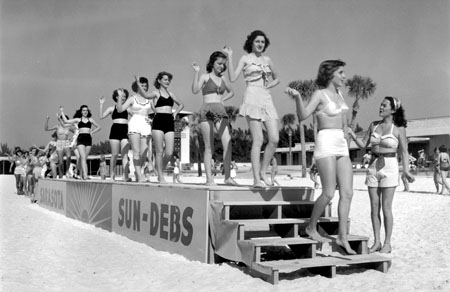‘When We Liked Ike’
Exhibit reflects life from the ’50s
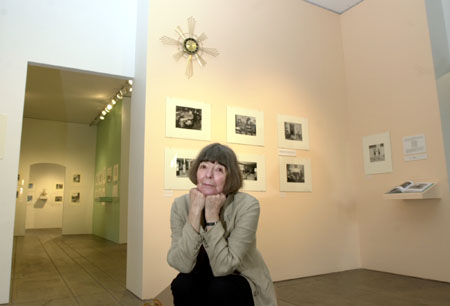
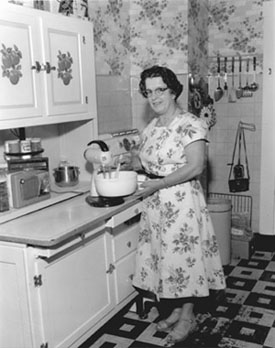
No other recent decade seems quite as dated as the 1950s. The ’60s comes close with its bell-bottoms and tie-dyed T-shirts, psychedelic posters, and ubiquitous peace signs. But many of us still recognize the ’60s as the convulsive birth pang or our own self-indulgent, anything-goes era. The decade of the 1950s, however, is a world apart.
That’s the feeling you get when you stroll through the new exhibition in the Carpenter Center’s ground-floor gallery, “When We Liked Ike: Looking for Postwar America.” It is a lost world, both alien and familiar, creepy yet oddly comforting, a time when organization men drove home to the suburbs in chrome-encrusted sedans to sip martinis while their wives set out Fiestaware on Formica tables, when boys drilled with dummy rifles and girls curtsied at excruciating cotillions, when middle-class whites came to costume parties in blackface and blacks were all but invisible, and over all hung the terrifying specter of the mushroom cloud. This is history as nightmare, from which, to adapt James Joyce’s phrase, we are still struggling to awaken.
The exhibition is the creation of Barbara Norfleet, curator of the Carpenter Center’s photography collection, which is the source of the exhibition’s images. They are photographs that might have ended up in some dark corner of oblivion, were it not for Norfleet’s foresight and care.
These are candid photos by studio photographers, professionals hired to take pictures at a wedding or a debutante ball, cover a beauty pageant or a Tupperware party, chronicle the attractions of a car dealership or a retirement village. Unlike documentary photographers, they did not set out to record their personal vision of a subject. Their purpose was to give the customers what they wanted. But in doing so, they created social documents that could have been captured in no other way.
Norfleet began collecting these photographs in 1972. She received an enthusiastic reception from the photographers she visited.
“They were all thrilled to have someone interested in their work. At the time it was considered worthless.”
Norfleet, however, saw their worth, perhaps because of the rare combination of influences that contributed to her view of the world. She started out as a social psychologist, earning her Ph.D. from Harvard in 1951. She taught with Harvard social scientist David Riesman, author of “The Lonely Crowd,” a seminal work on the ills of postwar America. But somehow looking at society through the lens of surveys and statistics didn’t satisfy her.
“I wasn’t very happy in social science. I thought visually, but I couldn’t draw. Then I took an introduction to photography course with Len Gittleman, and I absolutely flipped out.”
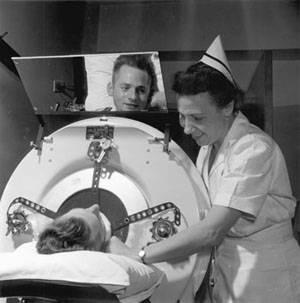
The course led to dual careers as a photographer and a photographic curator/scholar. As a documentary photographer, Norfleet has produced such works as “All the Right People” (Little Brown, 1986), one of the few photographic studies of the private lives of America’s upper crust. She has also produced several books in a mode she describes as “metaphoric,” including “The Illusion of Orderly Progress” (Knopf, 1999), photos of bugs enacting rituals of human society.
Having made the switch from psychology to visual and environmental studies (VES), Norfleet launched her career as a teacher of photography in 1969 with a course called “Photography as Social Description.” There were 12 places in the class, and the first day 170 students showed up, leading to a near-riot.
Norfleet continues to teach students doing special projects and to serve as curator of the photography collection despite having retired four years ago.
“I feel it’s my baby,” she said of the collection. She also believes that it is unique among photo collections at Harvard in that its contents were selected not only for their artistic value, but because they illustrate a theme – the social history of the United States.
In addition to the work of studio photographers from the years 1945 to 1965, the collection comprises a section on social reform in the United States from 1895 to 1910 and a group of art photographs. These latter two sections include the work of some very well known photographers such as Robert Frank, Walker Evans, and Louis Hine.
Norfleet is uncertain about the collection’s future, however. Housed in a dark warren of rooms on the fourth floor of Sever, the collection manages to survive on a minuscule budget, augmented by Norfleet’s fundraising efforts.
The collection’s fame has spread, both among publishers looking for photos on specific topics and among photographers looking for a safe harbor for their work.
“Just recently I heard from a photographer who was in Cuba when Castro took over. He wanted to know if we would take his negatives,” Norfleet said.
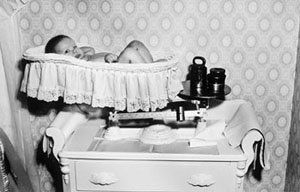
If one were looking for proof of the collection’s value as primary source material in the study of modern history, or for a demonstration of what can be done with that material to open people’s eyes to the meanings embedded in our shared past, one need look no further than the current exhibition.
More than just a show of photographs, the exhibition, designed by Christopher Frost, is something of an immersion experience. The Carpenter Center gallery space has been divided into a series of rooms reminiscent in their shape and scale of a 1950s ranch-style house. Some of the walls have been painted what are no doubt carefully researched ’50s colors the cool lime green and turquoise that once adorned our cars and refrigerators. Here and there one encounters an actual artifact from the period a copper-trimmed Formica table, a streamlined chrome breadbox, a television with molded plywood case – objects whose three-dimensionality and historical redolence lend the experience a disquieting sense of reality.
Amid the photographs of housewives with their Kelvinators and Mixmasters, of earnestly happy families barbecuing on their concrete patios, of clean-cut teens enjoying good, clean fun, and of harried businessmen on whose slumping shoulders rested the burden of keeping the whole thing going, Norfleet has interspersed quotations from such writers as David Riesmann, C. Wright Mills, James Baldwin, and Jack Kerouac. Their words provide an undercurrent of dark concern that contrasts sharply with the glossy images.
“This is how America wanted to see itself,” said Norfleet. “The pictures show a complacent, comfortable group of people who saw no wrong in the world they had created. And yet there was also racism, poverty, witch-hunting, the military-industrial complex, and alienation. The idea was to show why the ’60s were inevitable.”
The collection of photographs will also be available in book form, along with an expanded selection of quotations from writers of the period and an autobiographical introduction by Norfleet (W.W. Norton & Co., May 2001).
Norfleet will give a talk on the collection April 19, at 4:15 p.m. The exhibition at the Carpenter Center is free and open to the public and will remain on view until April 29.
Contact Ken Gewertz at ken_gewertz@harvard.edu
